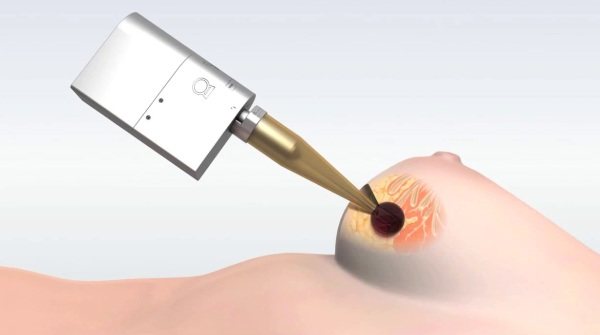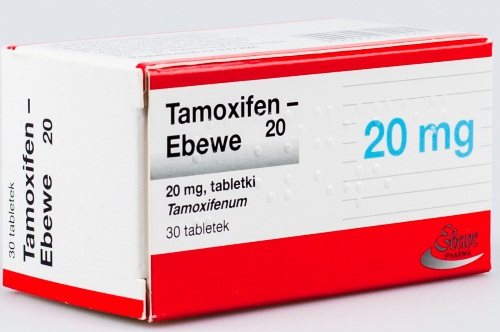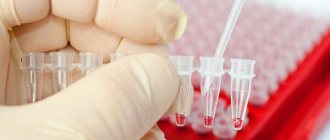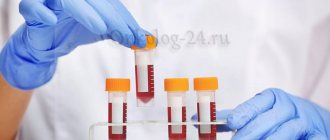Home > Encyclopedia of Oncology > What the tumor marker Ca 15-3 shows: decoding
Both when breast cancer is diagnosed and when this pathology is suspected, identifying the stage of the malignant process and determining the extent of the lesion play a huge role. One of the methods for obtaining reliable information about the patient’s condition is to analyze the mucin-type glycoprotein produced by the tumor. Women who are prescribed this study should know what the Ca 15-3 tumor marker shows in order to:
- realize the advisability of completing the procedure as soon as possible;
- dispel the misconception that elevated readings always indicate the presence of cancer;
- learn the specifics of interpretation and the importance of visiting a high-quality medical center;
- take measures to treat the detected disease without delay.
As with other blood tests, in order for the results and interpretation of the Ca 15-3 tumor marker to be accurate and reliable, the correct sequence of testing, modern equipment and proper preparation of the patient are needed. Israeli doctors, who have achieved enormous success in detecting mutated cells, can make a diagnosis at a very early stage. Thanks to an integrated approach, including laboratory and instrumental examinations, specialists assess the condition of the female body and prescribe appropriate therapy.
Characteristics of the antigen
Exceeding the norm of antigen content is characteristic of breast carcinomas. At the same time, it does not belong to the category of strictly specific, since in the first and second stages it is found in too large quantities in 1/5 of the subjects. The value of analysis as a diagnostic method is associated with its combination with CEA. If Ca 15-3 is elevated simultaneously with an increase in the norm of the tumor marker CEA, this means that the primary site of metastasis.
Interesting! The antigen is a protein compound weighing about 300 thousand Daltons and is characterized by a carbohydrate base, formed from epithelial cells of the mammary ducts.
When deciphered, the pathogenic protein content may be higher than normal not only in a patient with an advanced form of cancer, but also in healthy people or those whose cell mutation is at the initial stage.
In this regard, before making any diagnosis or prescribing therapy, especially surgical intervention or chemical treatment, women undergo additional research. In addition to ultrasound therapy, MRI and computed tomography, laboratory tests may also be required, for example, for the EMA marker. Consult an Israeli specialist
When to see a doctor
In the initial stages of breast cancer:
- Unusual formations are felt in the mammary gland. Very often the tumor can be small and not paid attention to.
- A characteristic feature of this structure is its painlessness. Most often, a growing cancer tumor in the initial stages does not cause concern.
- Areas with skin retraction are identified.
- In later stages of the disease, pain appears in the area where the tumor grows.
- A change in the nipple is detected, which thickens and swells.
- The nipple is retracted into the breast. In this case, you can look for a tumor in this area.
- Discharge from the nipple appears that is not associated with pregnancy or breastfeeding. Normally, the presence of minor discharge associated with changes in hormonal levels is acceptable. At the same time, the amount of discharge is insignificant and there are no blood impurities in them. In the presence of pathological changes, the amount of discharge increases sharply.
- There is an increase in the lymph nodes in the axillary region, they form a bunch of grapes.
- In case of advanced pathology, a blood test for tumor markers is carried out in the presence of the following symptoms:
- A tumor that is easily detected by palpation of the chest.
- Changing the location of the seal with a retracted nipple.
- Thickening of the skin around the nipple.
The signs of cancer are the same for all women; the symptoms that occur as the tumor grows may differ.
There are many forms of breast cancer, but they all have one common symptom - the appearance of enlarged lymph nodes in the armpit. If such a symptom is detected, contacting a doctor is mandatory. As a rule, when studying blood, even in normal conditions, an increase in the concentration of a tumor marker is detected.
At the discretion of the attending physician and in the presence of alarming symptoms, persons who are at risk for developing breast cancer and other pathologies are sent for a blood test:
- Patients whose families have already been diagnosed with breast cancer
- Women over forty years of age
- If the patient has been taking hormonal contraceptives for a long time
- Persons with atypical hyperplasia
- Patients with a persistent increase in estrogen levels in the blood
- Pregnant for the first time after thirty years
- Women suffering from long-term infertility
- Patients with a history of breast and ovarian cancer
- Women with late menopause
- Persons by occupation who come into contact with radioactive substances.
- How to get it back to normal
- If there are elevated tumor marker values in the blood, measures are taken to identify the reasons that led to the changes.
- When a diagnosis is made, a course of treatment is prescribed, which can be conservative or require surgical intervention. Upon completion of therapy, the level of antibodies drops to minimal values or specific proteins disappear completely.
Conservative treatment includes:
- Radiotherapy. Refers to the category of maintenance treatment. It is carried out before or after removal of the tumor. During the procedure, degenerated cells are destroyed.
- Intrabeam. Intraoperative irradiation. Radiation therapy is carried out during surgery, affecting the area where the tumor was located. In this case, the risk of damage to healthy tissue is significantly reduced and relapses of the disease are eliminated. The body's recovery period is reduced by six weeks.

- Chemotherapy. Which refers to medicinal methods. The patient is prescribed drugs of a toxic group that destroy mutated cells. They resort to a similar technique if surgical intervention is impossible. The result of the action of chemotherapy is the destruction of proteins responsible for the growth and division of cancer cells. In some cases, the DNA and RNA chains of diseased cells are destroyed.
- Hormone therapy is rarely used, only in situations where the tumor is susceptible to the influence of drugs belonging to this group.
- Targeted therapy is considered the mildest form of treatment for breast cancer, since the effect is exclusively on cancer cells. For this purpose, special drugs are prescribed.
Among the medications, patients are prescribed:
- Maximim in injections. The solution is administered intramuscularly daily for two weeks.
- Penicillin is prescribed when a diagnosis of fibrocystic mastopathy is established. In this case, an antibiotic is necessary to eliminate the symptom of inflammation and tissue swelling. The daily dose is two tablets.
- Tamoxifen, drug related to hormonal. Prescribed to restore hormonal levels. Which contributes to the disappearance of the tumor.

- Femoden. It also affects hormone levels. Under its influence, the tumor disintegrates.
Even after receiving a negative result, monitoring of the patient continues. She is prescribed preventive examinations and laboratory tests are carried out. Most often, such observation is carried out for life, since the likelihood of the disease returning remains.
Who is the analysis indicated for?
First of all, determination of the antigen level is necessary if breast cancer is suspected or an oncological diagnosis has already been made. Decoding the Ca 15-3 tumor marker is needed not only to confirm breast pathology in women, but also to clearly understand how badly the body is affected. Treatment tactics and, accordingly, survival prognosis depend on this. Israeli clinics, such as Assuta, have innovative equipment and qualified staff, which eliminates errors when performing tests.
Important! Many patients from post-Soviet countries with carcinoma are examined in Israel, after which it turns out that the diagnosis was made incorrectly in their homeland.
Thanks to the results, the doctor can understand whether it is worth talking about cancer or hormonal mastopathy. Also, blood sampling from a vein is necessary at the stage of completing a treatment and rehabilitation course for:
- detection of metastatic formations at the initial stage;
- tracking how effective the treatment plan is. In approximately 2/3 of patients, after the start of treatment, a significant decrease in antigen levels is observed, and the preservation of indicators indicates either the progression of the disease or active metastasis;
- timely adjustment of treatment in the absence of positive dynamics of indicators - if the norm of the tumor marker Ca 15-3 is still exceeded after surgery or chemotherapy, additional monitoring and changes in the tactics of influencing cancer cells may be prescribed;
- making an objective forecast.
Tumor marker CA 15-3
Breast cancer in women is the most common malignant disease. Every eighth woman runs the risk of having this pathology. This risk especially increases after 40 years.
It is important to consider that survival rate directly depends on the stage at which breast cancer was detected. Timely diagnosed pathology can be successfully treated, while at stages III-IV the survival rate can be less than 10%.
One of the methods for early diagnosis of breast cancer is analysis of the tumor marker CA 15-3.
What is this substance?
Tumor markers are waste products, membrane particles, enzymes or other substances produced by cancer cells. They are called tumor antigens. Using them, the human immune system detects mutated cells and promptly destroys them, preventing them from multiplying into a tumor. Therefore, even in healthy people, tumor markers are always present in the blood - after all, cells mutate regularly, forcing the immune system to constantly work.
But if the level of antigens suddenly increases, this may indicate a malfunction of the immune system, an increase in cancer cells, or the development of a tumor. Each organ and each tissue has its own markers. They are called specific. Tumor marker CA 15-3 is the main indicator of breast cancer.
There are also nonspecific antigens that can be used to determine the malignancy of the process, but it is not possible to understand where exactly it is localized.
Reliability of the analysis
The CA 15-3 tumor marker test in women is only one of the methods for early diagnosis of cancer. Its reliability does not exceed 80%. Moreover, only 20% of women with stage I-II breast cancer have levels of this substance that rise above normal. Therefore, if cancer is suspected, the patient must undergo a comprehensive diagnosis, which includes mammography, elastography, MRI, biopsy and other methods.
If you have taken the test and received a suspicious result, do not panic. The level of CA 15-3 can increase due to other, non-cancerous diseases:
• Fibroadenoma of the mammary gland; • Ovarian cysts; • Endometriosis; • Hepatitis, liver cirrhosis; • Autoimmune diseases.
Pregnancy and breastfeeding often provoke an increase in the level of CA 15-3. This marker can also increase in cancer of the liver, stomach, lung or pleural tissue, ovaries, cervix and other organs.
Purposes of the tumor marker test CA 15-3 Breast antigen is always tested when breast cancer is suspected. It can be a good auxiliary factor for clarifying the diagnosis. But given its low reliability in the early stages, the test for CA 15-3 is more used for other purposes: • Differential diagnosis; • Monitoring the effectiveness of antitumor treatment; • Timely detection of metastases and relapses; • Assessing the aggressiveness of the process and the prognosis for the patient. When should you donate blood for this antigen?
There is a list of symptoms for which it is advisable for a woman to see a mammologist. He will prescribe a set of studies, one of which may be a blood test for the tumor marker CA 15-3:
• Detection of compactions in breast tissue; • Pain and feeling of heaviness in the chest; • Uncharacteristic discharge from the nipples; • Change in the shape of the nipples and halos (bulging, hollowing); • The appearance of cracks, crusts, peeling on the skin of the nipples or the entire breast; • Immobility of the mammary gland relative to the chest; • Inflammation of regional lymph nodes.
With regular visits to a mammologist and independent palpation (palpation) of the breast, in the absence of suspicious symptoms, young women have nothing to worry about. After turning 40, it is advisable to take a blood test for the tumor marker CA 15-3 to determine its initial level, and then do this test every 2-3 years.
But there are several categories of women for whom it is advisable to undergo this examination more often:
• Presence of relatives with oncology (of any organs) in the family history; • Long-term use of oral contraceptives or other hormonal drugs; • Chronically high levels of estrogen in the blood; • Regular menstrual irregularities; • Early onset of first menstruation (up to 12 years); • Late onset of menopause (after 55-60 years); • Already diagnosed cancer of any other organs.
When the diagnosis of breast cancer is confirmed, after treatment or surgery, a CA 15-3 test is performed every 3 months for the first year, every 6 months for the second year, and then once a year for the timely detection of metastases and relapses.
Tumor marker CA 15-3 - interpretation of results
Only a doctor should interpret the results of laboratory tests. You should not look for CA 15-3 norms on the Internet and draw your own conclusions based on them. There are many different standards in the world, the norms of which can vary greatly depending on the research technology. Thus, according to European standards, the normal level of CA 15-3 is less than 30 U/ml. At the same time, Helix technology says that the norm is up to 20 U/ml. A marker level above 40 U/ml is already a reason to suspect cancer and undergo additional examination.
Reagents and equipment may differ in different laboratories. Therefore, repeated tests and monitoring of fluctuations in the amount of this antigen must be carried out in the same laboratory. Remember that if the tumor marker CA 15-3 is elevated, this is not yet a diagnosis. Only after a complete diagnosis, biopsy with histological examination can a final diagnosis be made.
Preparing to donate blood
The reliability of the CA 15-3 analysis is influenced by many external and internal factors. To reduce their impact, you need to properly prepare for blood donation:
• Blood is taken from a vein, after a 10-12-hour fast, in the morning; • You need to have a light dinner, without unnecessary spices; • One day before donating blood, you need to avoid alcohol; • On the day of the analysis you should not smoke; • A few days before donating blood, you need to stop taking medications. This can only be done under the supervision of a doctor; • If medications cannot be stopped for health reasons, you must report their use. The doctor will take this information into account when interpreting the results; • On the eve of your visit to the clinic, you should not visit gyms, solariums, saunas; • On the day of the test, try not to be nervous and avoid stress.
Where is the best place to donate blood?
Breast tumor marker testing can be done in municipal clinics, private laboratories and specialized private clinics.
In the first option, the test will be free if you contact the doctor. But public medical institutions often suffer from low reliability of results, long queues for several months in advance, and unfriendly, tired staff.
Private laboratories use high-precision equipment and high-quality reagents, produce accurate results, but do not provide consultations or interpretation.
In our clinic, everything you need for diagnosis and treatment is in one place. You will be able to donate blood without queues, in a comfortable, cozy environment, undergo a comprehensive examination and receive professional psychological support.
Reasons for the increase in indicators
Although this marker is considered decisive for breast tumors, its results are not an unambiguous guarantee that there is a focus of epithelial cell mutation in the body. Among the cancers in which the tumor marker Ca 15-3 is elevated, it is worth noting:
- bronchogenic type carcinoma;
- malignant neoplasms of the cervix;
- breast cancer with metastases;
- hepatocellular tumors;
- ovarian damage;
- pancreatic oncology.
Non-oncological causes of abnormally high values may be:
- benign tumors;
- third trimester of pregnancy;
- hepatitis in chronic or acute stage;
- diseases of the endocrine system of an autoimmune nature;
- cirrhosis of the liver;
- endometriosis.
To understand what exactly a woman is sick with, you need an integrated approach to diagnosis, so it is advisable to use the services of a clinic that has not only its own laboratory, but also machines for MRI, CT and ultrasound.
Possible complications
If abnormalities are detected in the blood, self-medication is prohibited.
A high volume of tumor markers in the blood is observed in advanced forms of cancer and developing mammary glands.
- This means that breast tissue is being destroyed. A growing tumor compresses and destroys healthy tissue that forms the mammary gland and milk ducts, which leads to the development of severe inflammation, even necrotic changes.
- There is a high probability of metastases occurring in organs and systems located far from the mammary glands. Cancer cells travel through the blood throughout the body and serve as the basis for the emergence of new malignant tumors. In this case, doctors give an extremely unfavorable prognosis.
First of all, metastases germinate:
- Into the lung tissue, which is actively supplied with blood and nutrients. In this case, signs of suffocation will be observed, often occurring against the background of ongoing pneumonia.
- Into liver tissue. When metastases form in the liver, symptoms of hepatitis appear.
- Into the brain. When metastases grow in the brain, vision, hearing, and sleep deteriorate, convulsions appear mainly at night, consciousness is impaired and the thinking process changes.
When metastases form, the probability of death is always high. CA 15-3 is a tumor marker, the norm in women without pathology is quite low, in this case it will be many times higher than normal values. Most of the methods used in the treatment of cancer at this stage of cancer are ineffective. Treatment of such patients is carried out in specialized hospices.
Pregnancy test
There are a number of differences in what the tumor marker Ca 15-3 means in pregnant women. It is performed very carefully so as not to miss the pathogenic process at the initial stage of development. The assessment of quantitative values is identical to that used when interpreting non-pregnant women:
- the norm is considered to be a protein content in the blood of up to 20-25 units per milliliter;
- indicators of 30 U/ml are threshold;
- if a concentration of more than 30 Units per milliliter is detected;
- if the readings are above 50 U/ml, then we are most likely talking about oncology.
Interesting! In completely healthy women, the norm of the tumor marker Ca 15-3 ranges from 6.5 to 13.4 units per milliliter. But sometimes, even with normal values, the likelihood of cancer exists.
When examined in the last three months of gestation, the permissible values may be exceeded, therefore, in order to clarify the diagnosis, a number of other tests and procedures are done. In the absence of symptoms and normal results, medical observation and re-diagnosis after the birth of the child are indicated.
Reference values:
Units of measurement in CELT: U/ml; norm -
Interpretation of results:
An elevated tumor marker does not clearly indicate breast cancer. The indicator is assessed by the attending physician based on a set of clinical signs. If necessary, a study of other indicators is prescribed.
The norm for healthy people is up to 26.9 - 30 U/ml. In healthy women who are not pregnant, the indicator is kept within the limits of 13.4, fluctuations in one direction or another by 6.5 U/ml are allowed. However, a normal indicator does not completely deny the presence of cancer. If there is a clinical picture of a tumor, further examination is required.
The increase in the indicator has several gradations, U/ml:
- up to 30 – threshold value, borderline state between health and disease, possible presence of mastopathy;
- from 30 to 50 – high level, evidence of a benign tumor or the beginning of a cancer process;
- above 50 – very high level, active malignant tumor or metastasis is likely.
Reasons for the increase:
- breast cancer, namely carcinoma;
- carcinoma arising from the bronchi;
- late stages of tumors of the female genital organs - uterus, ovaries, endometrium;
- malignant tumor of the stomach or liver;
- pancreas cancer.
Other reasons for the increase:
- fibroadenoma, lipoma, cyst, intraductal papilloma - with these formations the level of the indicator rises no higher than 50 units/ml;
- the same increase may occur with liver cirrhosis;
- in the third trimester of pregnancy, the increase in the indicator is considered physiological, it also does not exceed 50 units/ml;
- The cause may be autoimmune diseases in which hormonal balance changes.
All laboratory services
Make an appointment through the application or by calling +7 +7 We work every day:
- Monday—Friday: 8.00—20.00
- Saturday: 8.00–18.00
- Sunday is a day off
The nearest metro and MCC stations to the clinic:
- Highway of Enthusiasts or Perovo
- Partisan
- Enthusiast Highway
Driving directions
Dynamic observation
A single acquisition of information about the antigen content does not allow one to fully assess the likelihood of cancer or determine how a malignant neoplasm is being reduced. Therefore, most often the study of the ratio of results to the norm of the tumor marker Ca 15-3 is shown in dynamics. Similar tactics are used as part of systematic observation, in particular, when a woman is diagnosed with a benign tumor and the indicators are within the acceptable limit:
- During the first year, the biomaterial is examined monthly.
- For the second year, samples are taken every 2 months.
- Third year – once a quarter.
Such tracking makes it possible to understand at what point cells will begin to mutate and there is a risk of developing breast cancer.
Indications for the study
The purpose of a blood test is to detect a malignant tumor of the mammary glands at a stage when there are no visible signs of ongoing changes.
A blood test to identify this type of tumor marker is prescribed in cases where:
- it is necessary to differentiate breast cancer from mastopathy;
- there is a threat of metastasis with the risk of formation of a secondary malignant tumor;
- it is necessary to determine how effective the course of treatment is;
- trying to determine how aggressive the tumor is. The higher the concentration of antibodies, the greater the number of cells the tumor consists of.
A mandatory examination is prescribed after the patient has recovered, to exclude relapses of the disease. Secondary appearance of the tumor is possible several years after remission.
In the presence of proven mastopathy, testing for tumor markers is not carried out. If breast cancer is suspected, the secretions released from the nipples are examined in parallel with the blood.
The decision to send a patient for testing is made by an oncologist, gynecologist or mammologist. The material is collected in the laboratories of an oncology clinic or in specialized clinics. In ordinary district clinics there is no equipment that allows blood serum testing to be carried out at the proper level.
What to do if the indicator is elevated
There are quite a lot of women who have high antigen levels and lumps in their breasts, and all of them are interested in correctly diagnosing their illness and maintaining health. To do this, first of all, you should undergo a comprehensive examination, and, according to reviews on the forums, for girls who have an elevated tumor marker 15-3, it is best to do this in Israel. Here they can count on the professionalism of doctors and the absence of violations of the testing and sample storage procedures. The list of necessary studies includes a biopsy (in the absence of contraindications) and mammography.
If the tumor is not malignant, then you need to undergo regular examinations by an oncologist and mammologist in the future. Then the moment of degeneration of a neoplasm into a malignant one will not be missed. Even with borderline values, one should not forget about visiting specialists, especially if there is an unfavorable family history and other factors contributing to the development of cancer, namely:
- the onset of menopause;
- previously had cancer (it does not matter which organ, although those who have recovered from breast cancer are at greater risk);
- infertility or late birth of the first child;
- early onset of menstruation.









